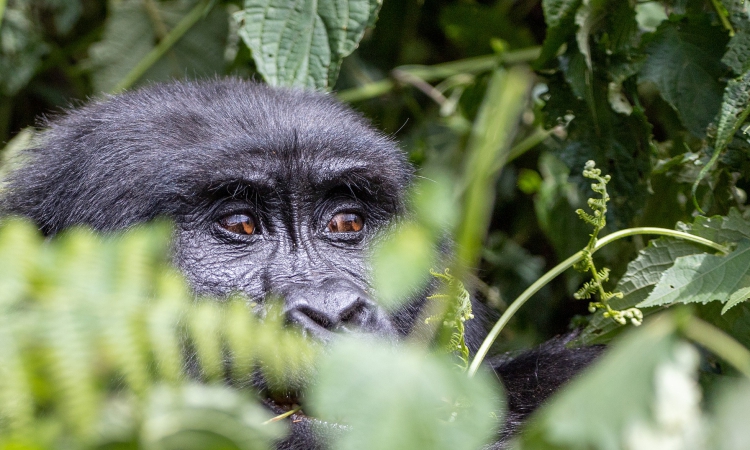Eastern lowland gorillas, also known as Grauer’s gorillas, are native to the mountainous forests of the Democratic Republic of Congo, specifically in Kahuzi-Biega National Park, Maiko National Park, Tayna Gorilla Reserve, Usala Forest, and the Itombwe Massif.
Eastern lowland gorillas are a critically endangered subspecies of the Eastern gorilla, following a drastic decline in their numbers.
Currently, there are about 3,800 individuals left on Earth, highlighting the need for continuous conservation efforts.
These endangered subspecies belong to the kingdom Animalia, class Mammalia, and domain Eukaryota.
They are among the largest of the four gorilla subspecies.
Eastern lowland gorillas live in groups called troops, led by a dominant male silverback.
The silverback gains leadership based on its age and strength, fighting to establish itself as the group’s head.
The silverback is responsible for protecting the group, deciding where members will eat, and where they will nest, among other duties.
Male Eastern lowland gorillas can weigh up to 163 kg and stand at 1.69 meters tall, whereas females weigh up to 81 kg and are slightly shorter, at about 1.8 meters.

Physical Appearance of Eastern Lowland Gorillas
Eastern lowland gorillas have jet-black coloring, similar to mountain gorillas, but with shorter hair on the head and body.
Older males develop a silver sheen on their backs when they reach sexual maturity.
Female Eastern lowland gorillas and immature males have darker, shorter fur than mountain gorillas.
Reproduction and Parenting of Eastern Lowland Gorillas
Reproduction: Female Eastern lowland gorillas give birth at the age of 8 years, which is when they reach sexual maturity. They have a gestation period of about 8.5 to 9 months, similar to humans.
Eastern lowland gorillas reproduce slowly, giving birth to only one baby and raising that infant for several years.
They give birth once every four years. Males reach sexual maturity at around 9 years of age, but they cannot reproduce until they physically become silverbacks, which happens between 12 and 15 years.
Parenting: A newborn infant weighs about 2 kg and is helpless for the first 3 months, during which it is carried in its mother’s arms.
The infant sleeps in the mother’s nest at night and is carried on her back during the day.
What Do Eastern Lowland Gorillas Eat?
The diet of Eastern lowland gorillas consists of shoots, roots, leaves, and small insects such as ants and termites. These gorillas can consume up to 18 kg of vegetation in a day.
Threats to Eastern Lowland Gorillas
The main threats to Eastern lowland gorillas include poaching for bushmeat, wildfires that destroy their natural habitat, and encroachment by humans for settlement and cultivation.
Diseases are also a significant threat.
Eastern Lowland Gorilla Trekking Cost
Eastern lowland gorilla trekking is primarily conducted in Kahuzi-Biega National Park, the main destination for tourists and the primary habitat for these gorillas.
Trekking can take anywhere from 30 minutes to 2 hours, with travelers allowed to spend only 1 hour with the gorillas. Gorilla permits can be obtained from the park headquarters.
The cost of trekking is 400 USD per person per trek.
Requirements to Carry:
- Hiking boots
- Hat
- Sunscreen
- Insect repellent
- Binoculars
- Gorilla trekking permit
Best Time to Visit
The best time to visit is during the dry season, from January to February and May to September.
By and large, Eastern lowland gorillas are magnificent creatures, and trekking to see them is a truly remarkable experience.










